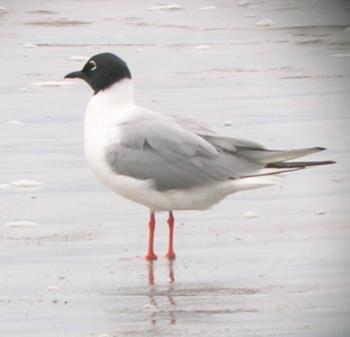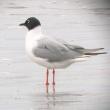Laughing gulls, flying ants and common nighthawks
Coming back from a Fisherman’s Island tour last August, we noticed that there were hundreds of laughing gulls fluttering in the air above the spruce trees as our boat passed Spruce Point. We might have just passed it off as simply “gulls circling in the air” had we not taken a closer look. Through the binoculars, we could see that the gulls were snapping up flying ants.
These aerial ants emerge throughout Maine by the millions in late summer. All of our smaller gull species including the black-hooded, laughing and Bonaparte’s gulls as well as ring-billed gulls are particularly adept at catching flying ants. Occasionally you’ll even see some of the larger herring gulls, the one most people refer to as the “seagull,” trying to get their share of the feast.
We’ve often wondered if the fall migration of one of our most dramatic and mysterious species, the common nighthawk, evolved to take advantage of the bounty of flying ants in our area in order to fatten up for the long migration ahead of them to South America.
Common nighthawks are fairly large birds, shaped like small falcons with long, sharply pointed wings. Despite their name, they are not closely related to hawks at all. And, sadly, they are also not very common in our area anymore, either. Common nighthawks are closely related to the whip-poor-will, another species that has plummeted in numbers over the last 50 years. Whip-poor-wills and common nighthawks are in a family of birds called the “goatsuckers,” so named because people once thought that their huge, wide mouths provided them a means for sucking milk from the udders of goats. Hard to believe now, but remember, before people understood migration, they also thought that swallows spent the winter under the mud of lakes and ponds. The real reason that these birds have such wide mouths is so they can swoop around in the evenings catching insects.
For a short two-week period in mid-August it is possible to sometimes see dozens of southbound-migrating common nighthawks in the early evening, silently careening back-and-forth across the sky, their long wings rocking this way and that, quickly changing directions as they feed.
Just a few days ago, a fellow birder from Eastport reported watching a group of nighthawks and gulls feeding together on an insect hatch above the shore there.
The Bonaparte’s gull is also a common feeder on flying ants during its own southbound migration. Unlike some of the other gulls that nest in the state though, Bonaparte’s gulls, which are only a little bigger than a common tern, nest in the vast boreal forest of Canada and Alaska. They have the surprising habit of nesting in trees instead of on the ground like most other gulls. Bonaparte’s gulls begin heading south to Maine by late July and early August and are a common fall bird in the bays and estuaries in the Boothbay region, even into the winter in some years.
One of our favorite places to see Bonaparte’s gulls is the waters around Barter’s Island, especially from the Boothbay Region Land Trust’s Porter Preserve and Gregory Trail and at Oven’s Mouth Preserve. We recommend a visit – and keep an eye on the sky for that fascinating bird behavior.
Event Date
Address
United States
























